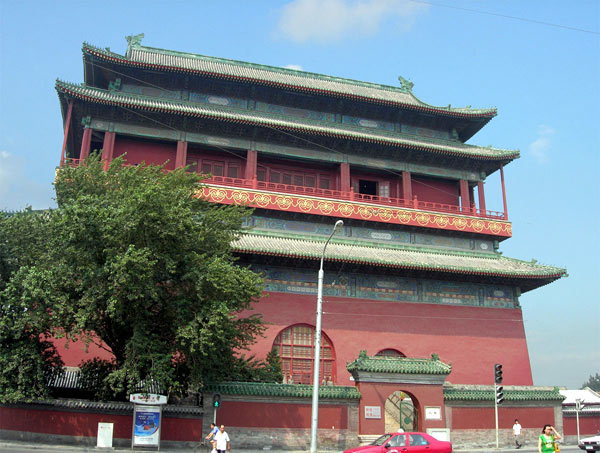Gulou to get small museum instead of 'Time Cultural City'
Plans to redevelop Beijing's Gulou Drum Tower area into the "Time Cultural City" tour-ism attraction have been officially abandoned and a much smaller "time museum" requiring no additional demolition will be built instead.
 |
|
Beijing's Gulou Drum Tower |
Yin Jun, spokesman of the Beijing Municipal Administration of Cultural Heritage, confirmed to the Global Times Sunday that the museum's construction plan was officially approved by the State Administration of Cultural Heritage last week. According to an online notice from the State administration published on November 30, the museum itself was approved on October 25.
The future site of the time museum is about 20 meters southeast of the Drum Tower. The construction application was approved because the planned site is already empty of buildings, according to the notice, which said that the work must not utilize explosives or pile drivers so as not to compromise the foundation of the Drum Tower.
The style of the museum, with an approximate area of 15,000 square meters, should also be in tune with those of traditional siheyuan, or courtyards.
The construction of the Time Cultural City was to take place around the Drum and Bell Towers, affecting the surrounding hutong, whose presence dates back to the Yuan dynasty (1279 to 1368). The Time Cultural City would have included an underground museum chronicling ancient timekeeping technology, complete with restaurants, shops and parking. No official demolition notice was ever issued, but rumors proliferated.
"I see the changing of policy as a sign of government progress," He Shuzhong, founder of the Beijing Cultural Heritage Protection Center, told the Global Times. "It shows that the government has a better understanding of the value of old community culture and it accepts the voices from the public and non-government organizations." He considered the museum appropriate for the area.
Generally, no major construction projects are planned for the old city area, according to the Beijing government's Suggestions to Strongly Promote Cultural Development in the Capital's Core Areas, which was issued on November 4.
 0
0 







Go to Forum >>0 Comments